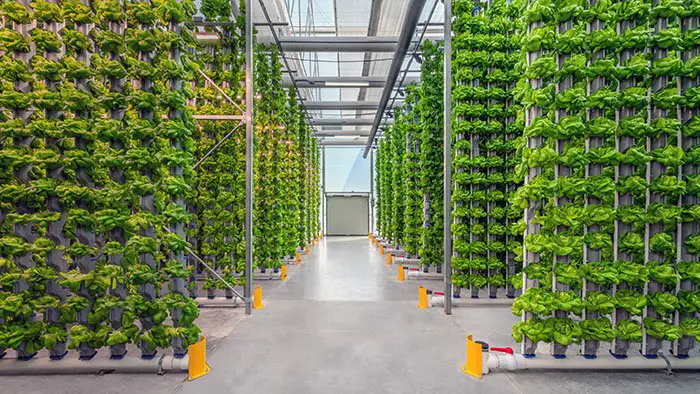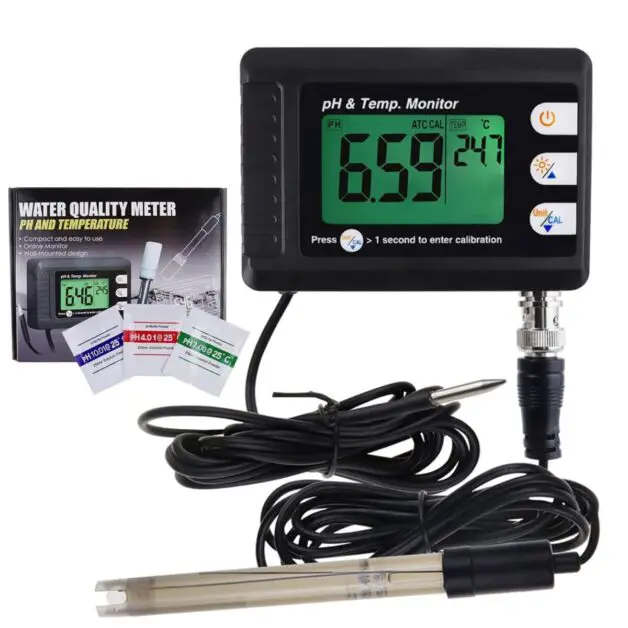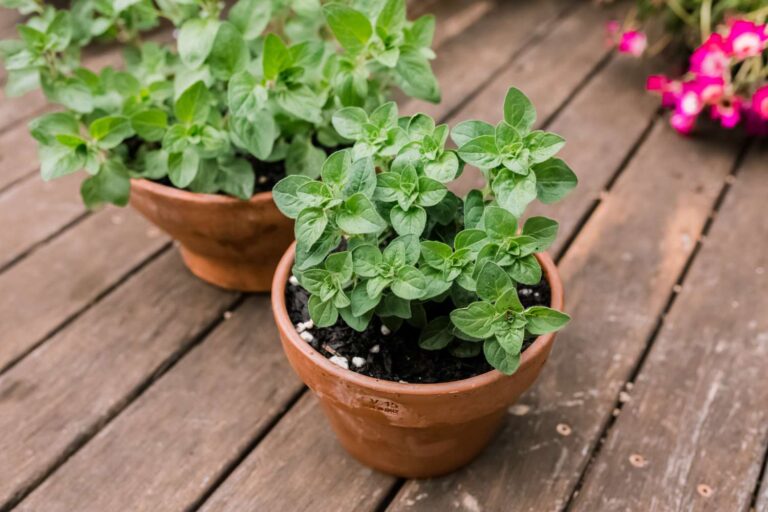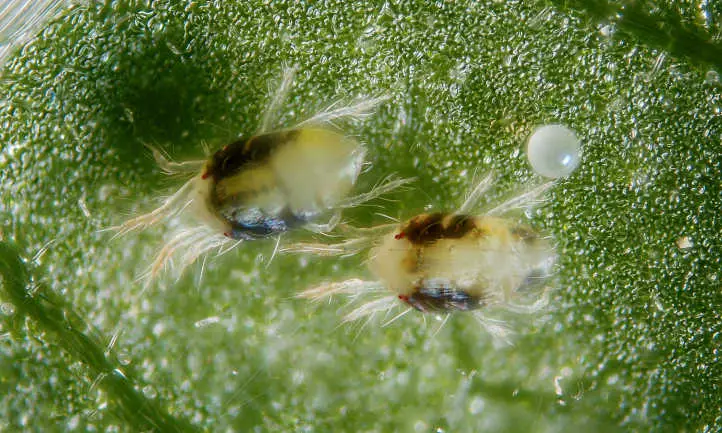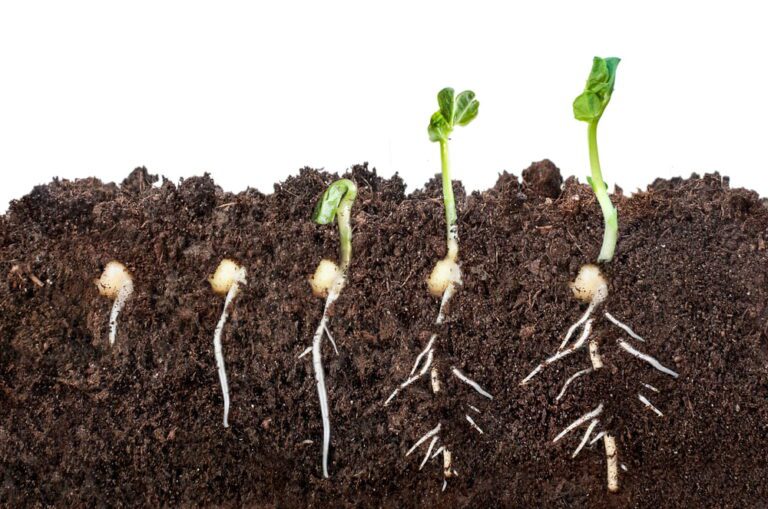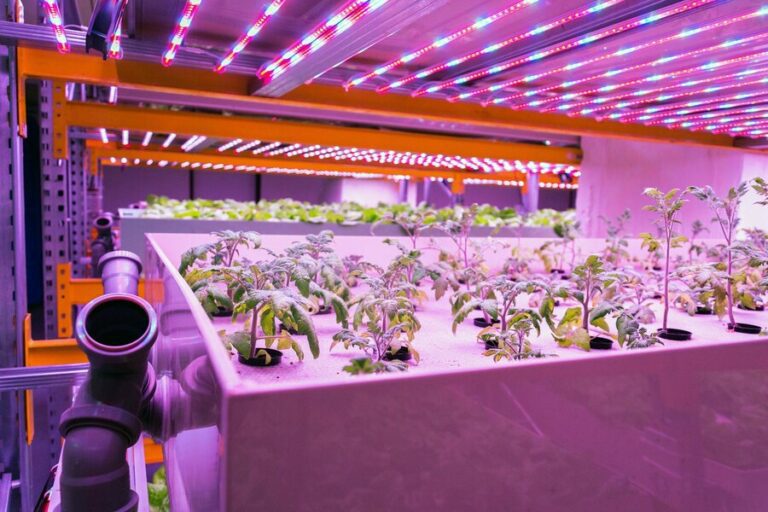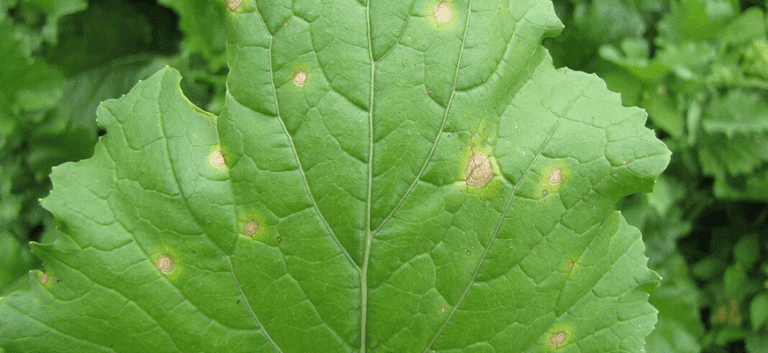Vertical Hydroponics Plant Selection Guide
“Did you know you can grow a garden without a backyard? Enter vertical hydroponics, the innovative solution for space-savvy gardening enthusiasts! But before you start stacking plants to the sky, let’s talk selection. With a myriad of options available, choosing the right plants for your vertical hydroponic setup can seem daunting. Fear not, as we’ve got you covered with our comprehensive Vertical Hydroponics Plant Selection Guide.
From leafy greens to vibrant herbs and even compact fruit varieties, we’ll dish out expert advice on which plants thrive in vertical environments. Get ready to elevate your gardening game and transform your space into a lush green paradise with our foolproof plant selection tips!”
Table of Contents
Understanding the Basics of Vertical Hydroponics

Vertical hydroponics is a modern and innovative method of growing plants vertically, thereby maximizing limited space and improving productivity. In this system, plants are not grown in soil but are instead immersed in a nutrient-rich solution, allowing for a more efficient absorption of nutrients.
- Space Efficiency: Vertical hydroponics maximizes space utilization by growing plants upward. Stacking layers of plants allows for higher plant density, leading to increased yields compared to traditional farming methods.
- Control Over Environment: With a vertical system, gardeners can fine-tune environmental factors such as light, temperature, and humidity. This customization ensures that each plant receives optimal conditions for growth and minimizes the risk of pests and diseases.
By utilizing vertical structures such as towers or walls, gardeners can effectively grow a large number of plants in a small area, making it a popular choice for urban gardening.
Factors to Consider in Vertical Hydroponics Plant Selection
When selecting plants for vertical hydroponics, there are several factors to consider in order to ensure successful growth and optimal yields.
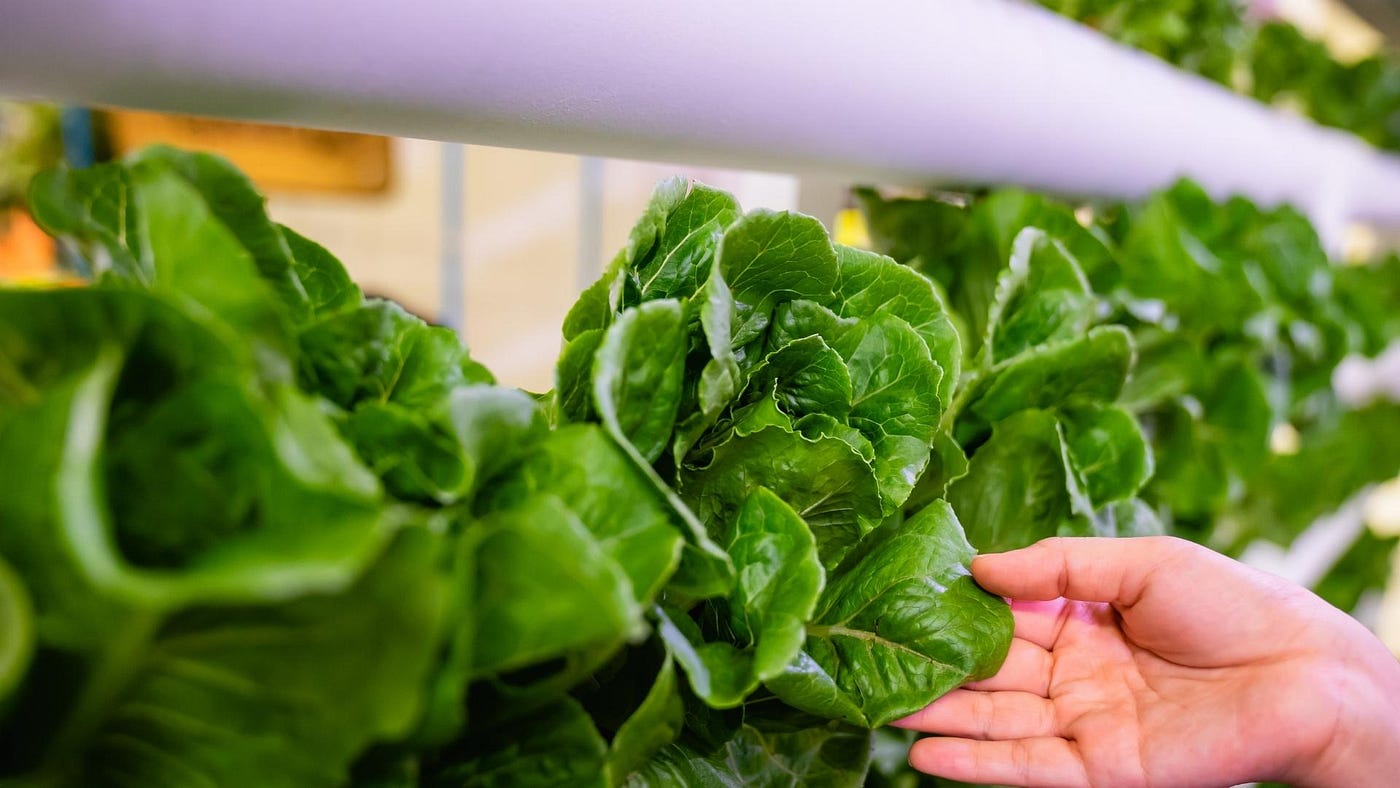
- Plant Size and Growth Habit: Choose plants that have compact growth habits or can be easily trained and pruned to prevent overcrowding in the vertical hydroponic system. Selecting plants that won’t hinder the growth of neighboring plants is crucial for maximizing space utilization.
- Light Requirements: Assess the light conditions in your vertical hydroponics setup, considering both natural sunlight and artificial lighting. Choose plants with light requirements that align with the available light levels, whether they thrive in full sun, partial shade, or low light conditions.
- Variability in Light Tolerance: Different plants have varying levels of light tolerance, so it’s essential to select varieties that can adapt to the light conditions in your setup. Research each plant’s specific light needs to ensure optimal growth and productivity.
- Consideration of Light Periods and Spectrums: Some plants may require longer light periods or specific light spectrums for optimal growth. Take into account the duration and intensity of light exposure, as well as any specific spectral requirements, to meet the needs of your chosen plants effectively.
By carefully considering the size and growth habit as well as the light requirements of the plants, you can ensure a successful and productive vertical hydroponics system.
As an avid gardener, delving into “WET YOUR PLANTS: Hydroponic Gardening” has been an enlightening experience. The book’s beginner-friendly approach provides clear instructions and comprehensive insights into the world of hydroponics, making it accessible even for those new to the concept. Its detailed information on various hydroponic systems, nutrient management, and plant care techniques has empowered me to set up and maintain my own hydroponic garden with confidence.
However, I found that the book occasionally lacked depth on certain topics, leaving me wanting more detailed explanations, especially as I progressed in my hydroponic journey. Despite this, the beautiful illustrations and inspiring content kept me engaged, offering both practical advice and motivation to explore the endless possibilities of hydroponic gardening. Overall, “WET YOUR PLANTS” serves as a valuable reference material for anyone looking to embark on or enhance their hydroponic gardening journey, providing a solid foundation for success while leaving room for further exploration and growth.
- Comprehensive Guide: The book offers a comprehensive guide to hydroponic gardening, covering everything from setup to maintenance and troubleshooting.
- Beginner-Friendly: It caters to beginners with easy-to-follow instructions and explanations, making hydroponic gardening accessible to all skill levels.
- Detailed Information: Readers benefit from detailed information on various hydroponic systems, plant care techniques, and nutrient management.
- Practical Tips: The book provides practical tips and advice based on real-world experiences, helping readers avoid common pitfalls and achieve successful harvests.
- Inspiring Content: Filled with inspiring stories and case studies, it motivates readers to explore the possibilities of hydroponic gardening and unleash their creativity.
- Beautiful Illustrations: The book features beautiful illustrations and visuals that enhance understanding and make learning enjoyable.
- Reference Material: It serves as a valuable reference material for both beginners and experienced hydroponic gardeners, offering insights that can be applied to different setups and situations.
- Limited Depth: Some readers may find that certain topics are not explored in sufficient depth, leaving them wanting more detailed information on specific aspects of hydroponic gardening.
- Lack of Advanced Techniques: Advanced hydroponic gardeners may find the book lacking in advanced techniques and strategies, as it primarily targets beginners.
- Minimal Troubleshooting: While the book covers troubleshooting to some extent, it may not provide extensive solutions for more complex problems that hydroponic gardeners encounter.
- Focus on Specific Methods: The book may focus more on certain hydroponic systems or methods, potentially neglecting others and limiting its applicability to a broader audience.
- Potential for Outdated Information: As with any printed material, there’s a risk of information becoming outdated over time, especially in a rapidly evolving field like hydroponics.
- Limited Availability: Depending on the reader’s location, the book may not be readily available or may incur additional shipping costs.
- Personal Preference: Some readers may prefer other resources or formats, such as online tutorials or video guides, over a traditional printed book for learning about hydroponic gardening.
Evaluating Optimal Light Requirements for Vertical Hydroponics
When it comes to vertical hydroponics, one of the most crucial factors to consider is providing optimal light requirements for your plants. Light is essential for photosynthesis, where plants convert light energy into chemical energy to support their growth and development. Therefore, understanding the different aspects of light and how to evaluate and meet the light requirements for your vertical hydroponics system is essential for successful cultivation.

- Plant-Specific Light Requirements:
- Different plant species have varying light intensity needs. Understanding these requirements is crucial for successful growth.
- Leafy greens (such as lettuce and herbs) typically thrive with lower light intensities, ranging from 10,000 to 15,000 lux.
- Flowering plants (like tomatoes or peppers) demand higher intensities, falling within the range of 15,000 to 20,000 lux.
- Measuring Light Intensity:
- Light intensity can be quantified using units like “foot-candles” or “lux.”
- Foot-candles are commonly used in the United States, while lux is the international standard.
- Ensure you’re aware of the appropriate unit for your region.
- Providing Adequate Light:
- By understanding your plants’ specific light needs, you can adjust your indoor lighting setup accordingly.
- Proper light exposure ensures photosynthesis, healthy growth, and optimal yield.
Remember, light is a critical factor in plant health, so tailor your setup to meet the unique requirements of each plant! 🌱🌞
Choosing the Right Hydroponic System for Vertical Growth
When it comes to vertical hydroponics, choosing the right system is crucial for the success of your plants’ growth. There are several factors to consider before making a decision, including the size of your space, the type of plants you want to grow, and your budget.
- Nutrient Film Technique (NFT) System: Utilizes a shallow tray or channel to continuously circulate a thin film of nutrient-rich water over plant roots. Efficient and effective for nutrient delivery, but requires constant and careful management of water flow.
- Aeroponic System: Involves suspending plant roots in the air and misting them with a nutrient solution. Provides ample oxygen for rapid growth but requires higher maintenance and monitoring for proper nutrient delivery.
- Vertical Tower System: Plants are placed in stacked layers or pockets, maximizing vertical space usage. Versatile and suitable for small spaces, accommodating a wide range of plant varieties. Ideal for gardeners with limited space seeking efficient use of vertical space.
Ultimately, the choice of hydroponic system for vertical growth depends on your specific needs and preferences. By considering factors such as space, plant types, maintenance requirements, and budget, you can select the system that best suits your gardening goals.
Exploring Nutrient Requirements for Vertical Hydroponics Plants
Ensuring proper nutrient balance is crucial for the success of vertical hydroponics plants. The controlled environment of a vertical system allows for precise management of the nutrients, giving plants exactly what they need for optimal growth and productivity.

- Role of Macronutrients and Micronutrients: Macronutrients (e.g., nitrogen, phosphorus, potassium) and micronutrients (e.g., iron, manganese, zinc) are essential for plant growth and development, supplied through nutrient solutions in hydroponics.
- Consideration of Plant Requirements: Determine nutrient requirements based on crop type, growth stage, and environmental conditions. Different plants have varying nutrient needs that change throughout their growth cycle.
- Influence of Environmental Factors: Factors such as temperature, humidity, and light intensity affect nutrient uptake and utilization by plants in vertical hydroponics systems.
- Importance of Monitoring: Regularly monitor nutrient levels to prevent deficiencies or toxicities that can impair plant growth or lead to crop failure. pH and electrical conductivity (EC) measurements help maintain nutrient balance.
- pH and EC Control: Control pH levels within the optimum range to ensure nutrient availability for absorption. Monitoring EC helps avoid nutrient concentration issues, ensuring plants receive the right amount of nutrients for healthy growth.
Nutrient Requirements for Vertical Hydroponics Plants
| Nutrient | Function | Required Amount (ppm) | Common Source |
|---|---|---|---|
| 1. Nitrogen (N) | – Aids in vegetative growth and chlorophyll production. | 150-250 ppm (vegetative) | Nitrate and ammonium-based fertilizers |
| 2. Phosphorus (P) | – Promotes root development and flowering. | 50-100 ppm | Phosphate-based fertilizers |
| 3. Potassium (K) | – Supports overall plant health and fruiting. | 150-200 ppm | Potassium nitrate or sulfate |
| 4. Calcium (Ca) | – Essential for cell wall structure and strength. | 100-200 ppm | Calcium nitrate or chloride |
| 5. Magnesium (Mg) | – Involved in chlorophyll synthesis and energy transfer. | 50-100 ppm | Magnesium sulfate or nitrate |
| 6. Sulfur (S) | – Plays a role in amino acid and protein synthesis. | 20-50 ppm | Epsom salt (magnesium sulfate) |
| 7. Iron (Fe) | – Essential for chlorophyll formation and electron transport. | 1-5 ppm | Chelated iron compounds |
| 8. Manganese (Mn) | – Involved in enzyme activation and photosynthesis. | 0.5-2 ppm | Manganese sulfate or chelates |
| 9. Zinc (Zn) | – Aids in enzyme activation and growth regulation. | 0.1-0.5 ppm | Zinc sulfate or chelates |
| 10. Copper (Cu) | – Essential for various enzyme activities. | 0.05-0.1 ppm | Copper sulfate or chelates |
| 11. Molybdenum (Mo) | – Required for nitrogen metabolism. | 0.01-0.1 ppm | Sodium molybdate or ammonium molybdate |
| 12. Boron (B) | – Involved in cell division and sugar transport. | 0.5-2 ppm | Boric acid or borax |
Key Considerations:
- pH Levels: Maintain pH within the optimal range for nutrient absorption (typically 5.5 to 6.5).
- EC/TDS Levels: Measure Electrical Conductivity (EC) or Total Dissolved Solids (TDS) to ensure proper nutrient concentration.
- Macro/Micronutrient Balance: Adjust nutrient solutions based on plant growth stages and observed deficiencies.
- Monitoring and Adjustments: Regularly monitor nutrient levels and adjust solutions to meet the dynamic needs of plants.
- Water Quality: Use clean and well-balanced water to prevent impurities affecting nutrient solutions.
Providing the right nutrients in the right ratios and at the right stages of growth is key to optimizing vertical hydroponics plant production. By understanding the nutrient requirements specific to each crop and closely managing nutrient solution composition, hydroponic gardeners can create an ideal environment for their plants to thrive. Stay tuned for our next section where we will delve further into the best practices for seed selection in vertical hydroponics, another crucial aspect of successful cultivation.
Best Practices for Seed Selection in Vertical Hydroponics
When choosing seeds for vertical hydroponics, it is important to consider certain factors to ensure the best results.
- Select Seeds Suited for Hydroponics: Choose seeds specifically bred for hydroponic growing , labeled as such. These seeds are adapted to soilless environments and possess traits like disease resistance and optimal growth rates for vertical hydroponics systems.
- Consider Plant Size: Opt for compact varieties suited for vertical growth to maximize limited space in vertical hydroponics setups. Look for plants with a bushier growth habit or those naturally inclined to grow tall and thin, facilitating efficient use of vertical space and preventing overcrowding.
- Maximize Vertical Space: Choose plants that grow vertically to make the most of available space. Vertical growth traits allow for efficient utilization of vertical space, preventing overcrowding and ensuring optimal plant development.
- Ease of Management: Compact varieties are easier to manage in vertical hydroponics systems, especially when it comes to pruning and training techniques. Selecting plants with manageable growth habits simplifies maintenance tasks and promotes healthy plant growth.
Selecting Disease-Resistant Varieties for Vertical Hydroponics
When selecting crops for vertical hydroponics, it is crucial to consider disease resistance as a primary factor. Disease-resistant varieties provide an added layer of protection against common pathogens that can wreak havoc on your hydroponic garden. With the controlled environment of vertical hydroponics, it is easier to prevent the spread of diseases, but it is still important to choose plants with inherent resistance.
Look for catalogs or websites that specifically highlight disease resistance in their product descriptions.
These sources provide valuable information on the specific diseases each variety is resistant to.
Use this information to make informed decisions when choosing seeds.
Reach out to local agricultural extension offices or join hydroponic gardening communities.
These networks can offer insights into plants that have performed well in your region.
Learning from local experiences helps mitigate the risk of common diseases in your area.
Remember, prioritizing disease resistance contributes to the long-term success and productivity of your vertical hydroponics system! 🌱🌿
Maximizing Vertical Space with Compact Plant Varieties
Vertical hydroponics systems are an excellent way to maximize space and increase crop yield. By utilizing compact plant varieties, gardeners can further optimize their vertical garden’s capacity. Compact plant varieties are specially bred to have a smaller overall size, which makes them perfect for vertical gardening.

dwarf tomato plant
One example of a compact plant variety suitable for vertical hydroponics is the dwarf tomato plant. These small plants are specifically bred to produce smaller, but still delicious, tomatoes. With their compact size, they can be easily accommodated in a vertical hydroponics system, allowing gardeners to grow more plants in a limited space.
lettuce variety
Another excellent option for maximizing vertical space is the compact lettuce variety. These lettuce plants are bred to have a smaller footprint while still producing full-size heads of lettuce. By utilizing these compact varieties, gardeners can grow more lettuce plants in their vertical hydroponics setup, ensuring a bountiful harvest while conserving space.
In conclusion, compact plant varieties are a fantastic option for maximizing vertical space in hydroponics systems. By choosing these specially bred varieties, gardeners can grow more plants in a limited area without sacrificing quality or yield. Whether it’s dwarf tomatoes or compact lettuce, utilizing these plant varieties will ultimately lead to a more productive and space-efficient vertical hydroponics garden.
Assessing Watering Techniques for Vertical Hydroponics
In vertical hydroponics systems, proper watering techniques are essential to ensure the optimal growth and development of plants. Unlike traditional soil-based gardening methods, where water is absorbed from the ground, hydroponic plants rely on a controlled water supply. This makes it crucial to understand the different watering techniques and how they can be applied to vertical hydroponics.
- Drip system: Utilizes small tubes and emitters to deliver water directly to plant roots, minimizing wastage and preventing overwatering. Highly efficient and customizable, allowing for precise control over watering schedules and quantities based on plant varieties’ specific requirements.
- Ebb and Flow System: Involves periodically flooding the growing medium with nutrient-rich water and draining it away. Ensures adequate hydration and oxygenation of roots, particularly beneficial for larger vertical hydroponics setups. Efficiently waters multiple plants simultaneously.
- Consider Plant Needs: When selecting a watering technique, consider factors such as plant size, water requirements, and nutrient uptake. Tailor the watering technique to meet the specific needs of the plant varieties grown in the vertical hydroponics system, ensuring optimal growth and development.
Regular monitoring of moisture levels in the growing medium is also essential to adjust watering schedules and quantities accordingly. Overall, selecting the right watering technique and properly implementing it will contribute to healthy, vibrant plants in your vertical hydroponics garden.
Managing pH Levels in Vertical Hydroponics Systems
Maintaining the optimal pH level is crucial for the successful cultivation of plants in vertical hydroponics systems. pH refers to the acidity or alkalinity of the nutrient solution, which greatly influences plant growth and nutrient absorption. Ideally, the pH level should be kept in the range of 5.5 to 6.5, slightly on the acidic side.
• Regular monitoring of pH levels is essential for successful cultivation in vertical hydroponics systems.
• pH should ideally be maintained between 5.5 to 6.5, slightly on the acidic side.
• Test the pH of the nutrient solution at least once a week using a pH meter or pH test kit.
• Adjustments should be made if the pH is too high or too low.
• To raise pH levels, small amounts of pH-up solution or potassium bicarbonate can be added.
• To lower pH levels, use pH-down solutions like phosphoric acid or citric acid.
• Make adjustments gradually and allow time for the solution to stabilize before retesting.
Implementing the Automatic pH Meter into my hydroponic setup has simplified pH monitoring significantly. Its accurate readings and automatic calibration feature ensure precise measurements without the hassle of manual calibration. The temperature compensation function further enhances its reliability, allowing for consistent pH readings even in fluctuating temperature conditions. However, I’ve noticed that the electrode can be fragile, requiring careful handling to prevent damage.
Despite this minor drawback, its portable design, clear display, and versatility make it a valuable tool for hydroponic gardening, aquarium maintenance, and laboratory testing. Overall, the Automatic pH Meter has streamlined my pH monitoring process, providing convenience and accuracy essential for maintaining optimal nutrient levels in my hydroponic system.
✔ Easy Calibration: With automatic calibration functionality, users can calibrate the meter quickly and easily, minimizing setup time and ensuring reliable readings.
✔ Temperature Compensation: The meter features temperature compensation, allowing for accurate pH measurements even in fluctuating temperature environments.
✔ Long Battery Life: Users can rely on the meter for extended periods thanks to its long battery life, reducing the need for frequent battery replacements.
✔ Portable Design: Its compact and lightweight design makes it convenient to carry around and use in various hydroponic setups, both indoors and outdoors.
✔ Clear Display: The meter’s clear display provides easy-to-read pH readings, ensuring users can interpret the results with clarity.
✔ Versatile Use: Suitable for a wide range of applications, including hydroponic gardening, aquarium maintenance, and laboratory testing.
❌ Limited Durability: While the meter is designed for durability, prolonged exposure to harsh environments or rough handling may impact its longevity.
❌ Manual Calibration Required: Despite its automatic calibration feature, occasional manual calibration may still be necessary to maintain optimal accuracy.
❌ Calibration Solution Not Included: Users may need to purchase calibration solution separately, adding to the initial cost of the meter.
❌ Learning Curve: Beginners may experience a learning curve when initially using the meter, especially regarding calibration and proper usage.
❌ Price: The upfront cost of the automatic pH meter may be higher compared to manual pH meters, though its features and convenience justify the investment for many users.
❌ Limited Warranty: Warranty coverage may be limited compared to other pH meters on the market, requiring users to consider additional protection plans for long-term peace of mind.
Understanding Temperature and Humidity Control in Vertical Hydroponics
Temperature and humidity control play a crucial role in the success of vertical hydroponics systems. Maintaining optimal conditions is essential for the overall health and growth of plants. The temperature within the growing area should be carefully monitored and regulated. Most crops thrive in temperatures ranging between 65°F to 85°F (18°C to 29°C). However, it is important to note that different plants have specific temperature preferences, so it is necessary to research the ideal range for each crop.
- Temperature Control Methods: Employ ventilation, cooling systems, and heating devices to regulate temperature. Adequate air circulation prevents stagnant air and reduces the risk of fungal diseases. Proper insulation helps maintain consistent temperatures, especially in extreme weather conditions. Use thermometers and humidity sensors to monitor and adjust conditions accurately.
- Humidity Management: Control humidity levels to optimize plant health. Higher humidity (70-90%) is recommended during germination and early growth stages, gradually decreasing to 50-70% as plants mature. Use humidity trays, dehumidifiers, or humidifiers to adjust humidity levels as needed. Maintaining appropriate humidity levels promotes healthy growth and reduces disease risk.
- Optimizing Growing Environment: Maintaining ideal temperature and humidity ranges is crucial for maximizing crop yields and plant health in vertical hydroponics systems. Careful monitoring and control of these factors create an optimal growing environment conducive to thriving plants and successful harvests.
Maintaining ideal temperature &humidity range in vertical hydroponics systems maximizes crop yields &plant health. By carefully monitoring these factors& implementing appropriate controls gardeners create optimal growing environment fostering thriving plants& successful harvests.
Selecting Plants Based on Growth Rate in Vertical Hydroponics
When selecting plants for vertical hydroponics, it is important to consider their growth rate. Different plants have varying growth rates, and choosing the right ones can help you maximize the potential of your vertical system. Fast-growing plants are ideal for vertical hydroponics as they can quickly utilize the available vertical space and produce a bountiful harvest.
• Lettuce plants have a short growth cycle of 25 to 50 days, making them ideal for vertical hydroponics.
• Herbs like basil, cilantro, and parsley are fast-growing options for vertical hydroponics.
• Certain varieties of salad greens such as arugula and spinach also have fast growth rates.
• Selecting plants with fast growth rates allows you to maximize the productivity of your vertical hydroponic system.
• Fast-growing plants ensure a continuous supply of fresh produce throughout the season.
Addressing Pollination Challenges in Vertical Hydroponics
Addressing Pollination Challenges in Vertical Hydroponics is crucial for ensuring successful crop production. Unlike traditional outdoor gardening, vertical hydroponics systems lack the insects and wind necessary for natural pollination. To overcome this challenge, gardeners can employ various techniques to manually pollinate their plants.
- Vibration pollination: Shake the plant gently or use a vibrating device to release pollen
- Stimulates male flowers to disperse their pollen, reaching female flowers for fertilization
- Take care not to shake plants too forcefully to avoid damage
- Hand pollination: Transfer pollen from male flowers to female flowers using a small brush or cotton swab
- Gently transfer the pollen without damaging the flowers for successful fertilization
- Mimics the action of bees or other pollinators
By employing these manual pollination methods, gardeners can address the challenges of pollination in vertical hydroponics and ensure successful growth and development of their plants.
Building Support Structures for Vertical Hydroponics Plants
Building support structures for vertical hydroponics plants is an essential aspect of creating a successful and efficient system. These structures not only provide stability and prevent the plants from toppling over, but they also optimize the use of space, allow for proper light distribution, and facilitate easy access for care and maintenance.
- Plant-Specific Support:
- Vining Plants (e.g., Tomatoes, Cucumbers):
- These plants sprawl and require sturdy trellises or cages.
- Choose materials that can withstand the weight of the vines.
- Compact Plants (e.g., Lettuce, Herbs):
- Simpler solutions like vertical shelving or wall-mounted planters suffice.
- Vining Plants (e.g., Tomatoes, Cucumbers):
- Anchoring and Stability:
- Ensure the structure is properly anchored and secured.
- As plants grow heavier, stability becomes crucial.
- Durable materials (metal, strong PVC pipes) provide necessary strength.
- Regular Inspection and Reinforcement:
- Periodically check and reinforce the structure.
- Prevent potential damage or collapse due to plant weight.
- Strategic Plant Placement:
- Organize plants logically within the structure.
- Place taller-growing plants at the back or center to avoid overshadowing smaller plants.
- Adequate spacing promotes air circulation, prevents disease spread, and facilitates maintenance tasks.
In conclusion, building support structures for vertical hydroponics plants plays a pivotal role in ensuring their successful growth and yield. By carefully choosing the appropriate structure, anchoring it securely, and organizing the plants thoughtfully, gardening enthusiasts can create a thriving and productive vertical hydroponics system.
Pruning and Training Techniques for Vertical Hydroponics Plants
Pruning and training techniques play a crucial role in maximizing the growth and productivity of plants in vertical hydroponics systems. By properly pruning and training your plants, you can create a healthier and more efficient garden space.
pruning
One important technique is selective pruning, which involves removing the unwanted or damaged parts of the plant. This can include dead leaves, yellowing branches, or diseased sections. By eliminating these areas, you not only improve the overall appearance of the plant, but also prevent the spread of pests and diseases. Additionally, selective pruning helps divert the plant’s energy towards healthy growth and fruit production.
Training
Training, on the other hand, involves manipulating the plant’s growth pattern to optimize its vertical space utilization. This can be achieved through techniques such as trellising, staking, or tying. By guiding the plant’s growth, you prevent it from sprawling and instead encourage it to grow upward. This not only saves space but also ensures that the plant receives adequate light and air circulation, leading to healthier and more productive growth.
Overall, mastering pruning and training techniques is essential for successful vertical hydroponics gardening. By understanding and implementing these practices, you can create a well-structured and productive garden that maximizes your available space and produces abundant, high-quality crops.
Harvesting and Maintaining Vertical Hydroponics Crops
In vertical hydroponics, harvesting and maintaining crops require careful attention and adherence to best practices. As plants grow vertically, it is essential to understand the optimal time for harvesting to ensure maximum yield and quality. Monitoring the plants closely and regularly assessing their growth stage is crucial in determining when to harvest.
- Pruning:
- Remove dead, diseased, or damaged leaves, branches, or flowers.
- Promotes healthy growth and prevents disease spread.
- Maintain a clean and clutter-free plant canopy.
- Training:
- Guide plants to grow in a specific direction.
- Ensure even exposure to light and efficient space utilization.
- Supports optimal plant development.
- Pest Control:
- Regularly inspect plants for signs of pests (e.g., insects, mites).
- Take immediate action if pests are detected (e.g., use natural predators or organic treatments).
- Prevents pest infestations and minimizes damage.
- Sanitation and Sterility:
- Keep the hydroponic system and equipment clean.
- Regularly sanitize surfaces to prevent disease transmission.
- Create an optimal growing environment.
In the next section, we will explore common challenges that may arise in vertical hydroponics and discuss effective troubleshooting methods. By understanding and implementing proper harvesting and maintenance techniques, gardening enthusiasts can reap the rewards of successful vertical hydroponics cultivation.
Troubleshooting Common Challenges in Vertical Hydroponics
When engaging in vertical hydroponics, gardeners may encounter various challenges that can hinder the success of their crops. Identifying and troubleshooting these issues promptly is crucial for maintaining healthy and vibrant plants.
nutrient imbalance
One common challenge is nutrient imbalance, which can occur when the nutrient solution lacks essential elements or contains excessive amounts of certain nutrients.This can lead to stunted growth, nutrient deficiencies, or nutrient toxicity in plants. Regularly monitoring the pH and electrical conductivity (EC) levels of the nutrient solution, as well as following a balanced nutrient feeding schedule based on specific plant requirements, can help prevent nutrient imbalances and ensure optimal plant growth.
inadequate lighting
Another challenge that gardeners may face in vertical hydroponics is inadequate lighting. Insufficient or improper lighting can result in weak and leggy plants, as well as inhibit the photosynthesis process. It is essential to evaluate the light requirements of the specific plant species being cultivated and select appropriate lighting systems accordingly. LED grow lights are a popular choice for vertical hydroponics, as they provide specific spectrum wavelengths to promote photosynthesis and growth.
Additionally, ensuring proper light intensity, duration, and distance from plants is vital for maximizing light absorption and preventing light burn or light stress. Regularly monitoring and adjusting lighting conditions based on plant growth and development stages can help overcome lighting challenges and foster healthy plant growth in vertical hydroponics systems.
By addressing and troubleshooting these common challenges in vertical hydroponics, gardeners can ensure the success and productivity of their crops. Implementing proactive measures such as regular monitoring, adjusting nutrient solutions, and providing adequate lighting are essential for maintaining optimal plant health in vertical hydroponics systems.
Watch video for more information:
FAQ
What are the basic principles of vertical hydroponics?
Vertical hydroponics involves growing plants in a stacked or vertical arrangement, allowing for efficient use of space and maximizing crop yields. It typically utilizes a soilless growing medium and a nutrient-rich water solution.
What factors should be considered when selecting plants for vertical hydroponics?
Factors such as plant size, growth habit, and root structure should be considered when selecting plants for vertical hydroponics. It is important to choose plants that can adapt well to compact spaces and have a strong root system to support vertical growth.
How do I determine the optimal light requirements for my vertical hydroponics system?
The light requirements for vertical hydroponics depend on the specific plants being grown. It is important to consider factors such as light intensity, duration, and spectrum. Consulting the plant’s specific light requirements or using artificial grow lights can help ensure optimal light conditions.
What are the different types of hydroponic systems suitable for vertical growth?
Some common hydroponic systems suitable for vertical growth include nutrient film technique (NFT), aeroponics, and tower systems. Each system has its own advantages and considerations, so it is important to choose one that best fits your needs and space constraints.
What are the nutrient requirements for plants in vertical hydroponics?
Plants in vertical hydroponics systems require a balanced nutrient solution that contains essential macro and micronutrients. It is important to monitor and adjust the nutrient levels regularly to ensure optimal plant growth and development.
How do I select disease-resistant varieties for vertical hydroponics?
When selecting plants for vertical hydroponics, it is important to choose disease-resistant varieties. Researching and selecting plant varieties known for their resistance to common diseases can help minimize the risk of plant infections and ensure healthy crops.
How can I effectively manage pH levels in my vertical hydroponics system?
Maintaining the proper pH level is crucial for the success of a vertical hydroponics system. Regular monitoring and adjustment of the pH using pH testing kits or meters is necessary to keep the nutrient solution within the optimal range for plant uptake.
How can I address pollination challenges in vertical hydroponics?
In vertical hydroponics, where natural pollinators may not have easy access to plants, manual pollination techniques can be employed. This can involve gently transferring pollen from the male to the female flowers using a small brush or cotton swab.
What are some effective pruning and training techniques for vertical hydroponics plants?
Pruning and training techniques such as topping, pinching, and trellising can help manage plant size and encourage upward growth in vertical hydroponics systems. Proper pruning and training can maximize light penetration and airflow, leading to healthier and more productive plants.
How do I harvest and maintain crops in a vertical hydroponics system?
Harvesting in vertical hydroponics involves carefully removing mature plants without damaging the surrounding ones. Regular maintenance tasks include monitoring nutrient levels, checking for pests and diseases, and cleaning the system to ensure optimal plant health.
What are some common challenges in vertical hydroponics and how can they be troubleshooted?
Common challenges in vertical hydroponics include nutrient deficiencies, pest infestations, and environmental imbalances. These can be troubleshooted by adjusting nutrient solutions, implementing pest control measures, and maintaining proper environmental conditions such as temperature and humidity.

Studied Agricultural Engineering-Plant Protection at University of California, Davis.
Head of Content writing team at Southelmontehydroponics.com

